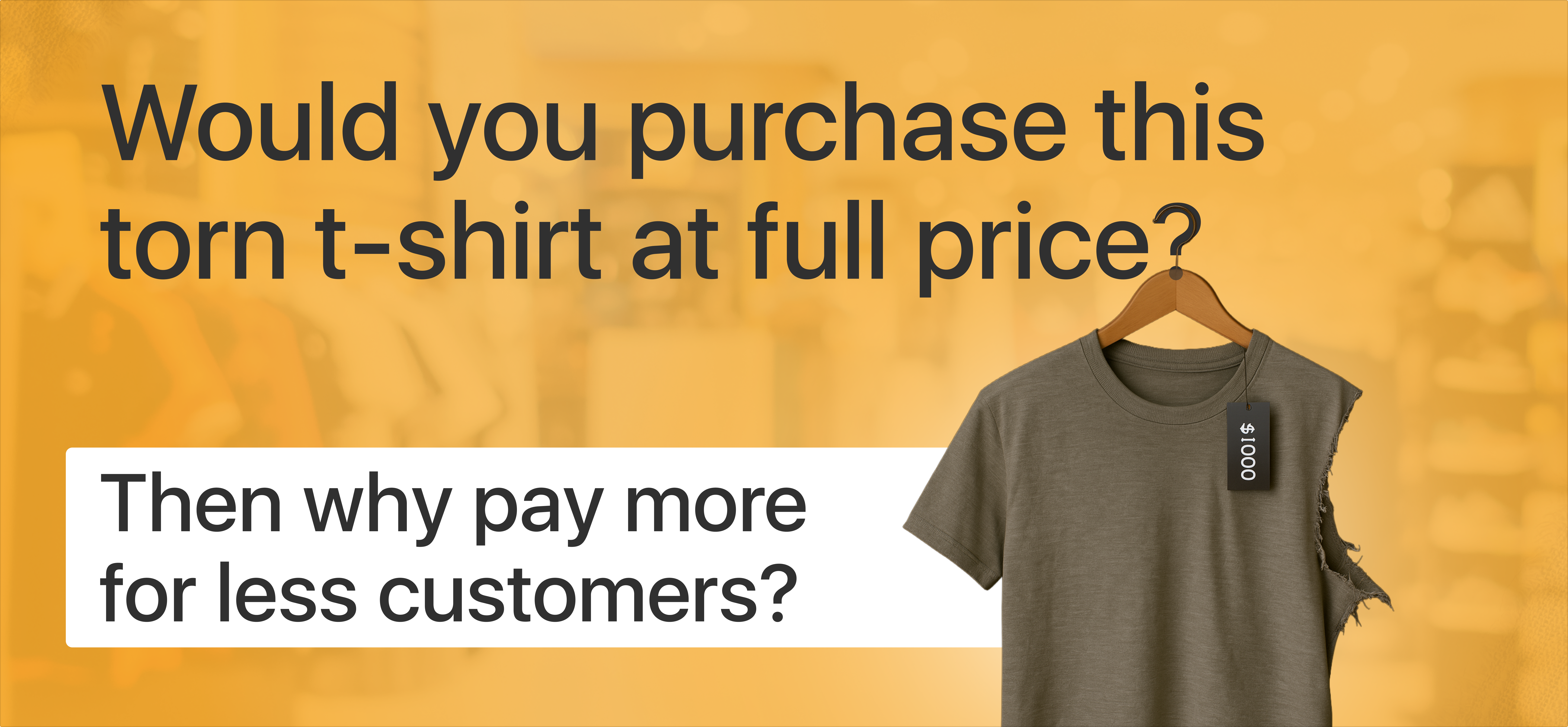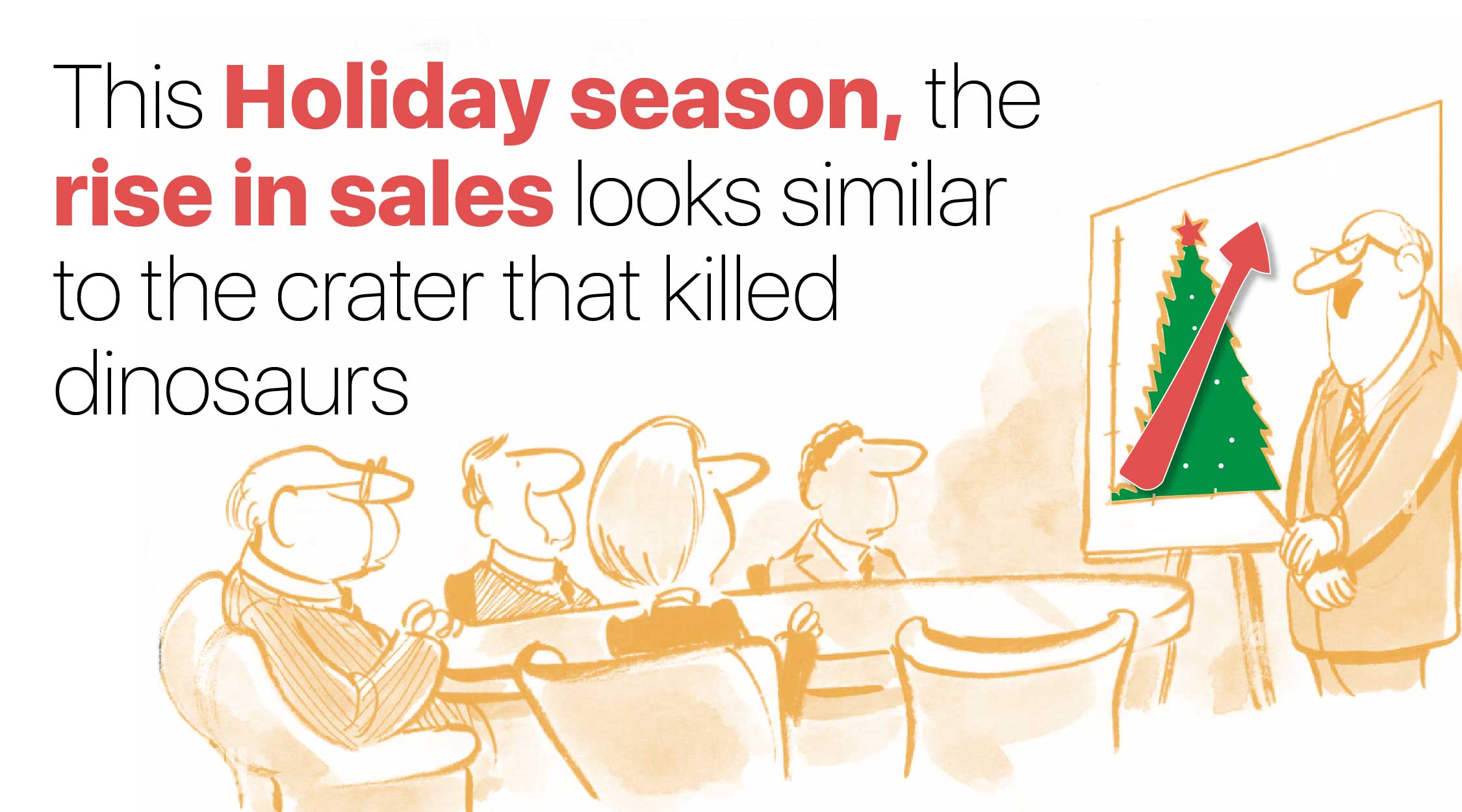Top Travel Brands Have Mastered The Multi-Touch Strategy—Have You?
From dialing a travel agent to finding the best deals online in just a few clicks, travel today has changed drastically. It’s faster, accessible, and more digital than ever—blending bucket lists, business trips, and rejuvenating escapes into seamless travel booking experience.
Did You Know? 80% of travelers today prefer to book their entire trip online, with 86% of Millennials and 83% of Gen Z leading the charge. This trend is expected to generate 75% of the total travel revenue through digital channels by 2029–making online presence not just important, but essential for brands in the travel space.
The opportunity for advertisers to target high-intent users is massive. In 2024, approximately 1.4 billion international tourists traveled worldwide. According to the World Travel & Tourism Council (WTTC), the global tourism market is expected to hit $11.7 trillion by 2025 and reach $14.77 trillion by 2029 growing at a steady 5% CAGR. With travelers increasingly choosing digital booking paths, brands that adapt now are poised to capture a larger share of this booming market.
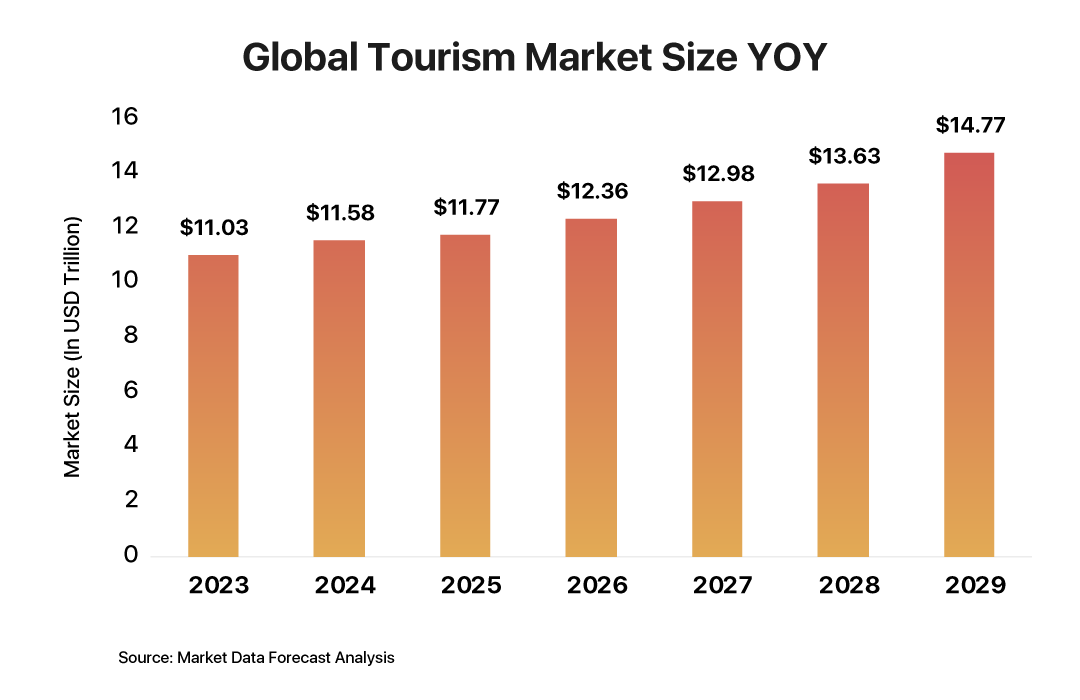
U.S. & Europe: Trillion-Dollar Tourism Powerhouses
In the U.S., the tourism market is set to reach $1.35 trillion in 2025, with travel-related activities generating $223.64 billion in revenue alone. This year, 92% of Americans plan to travel—both domestically and internationally—and over half intend to take more trips than the previous year.
Meanwhile, Europe isn’t far behind. The continent’s travel sector is projected to hit €1.9 trillion in 2025, contributing 10.5% to GDP. This year, in the UK, 83% of adults are planning a holiday—split between domestic and international adventures.
With travel demand surging on both sides of the Atlantic, the question arises: which segments are paving the way?
The momentum is strongest in the hotels segment that is projected to generate $442.97 billion in revenue by 2025—followed by package holidays forecasted to generate $313.9 billion and vacation rentals $105.71 billion.
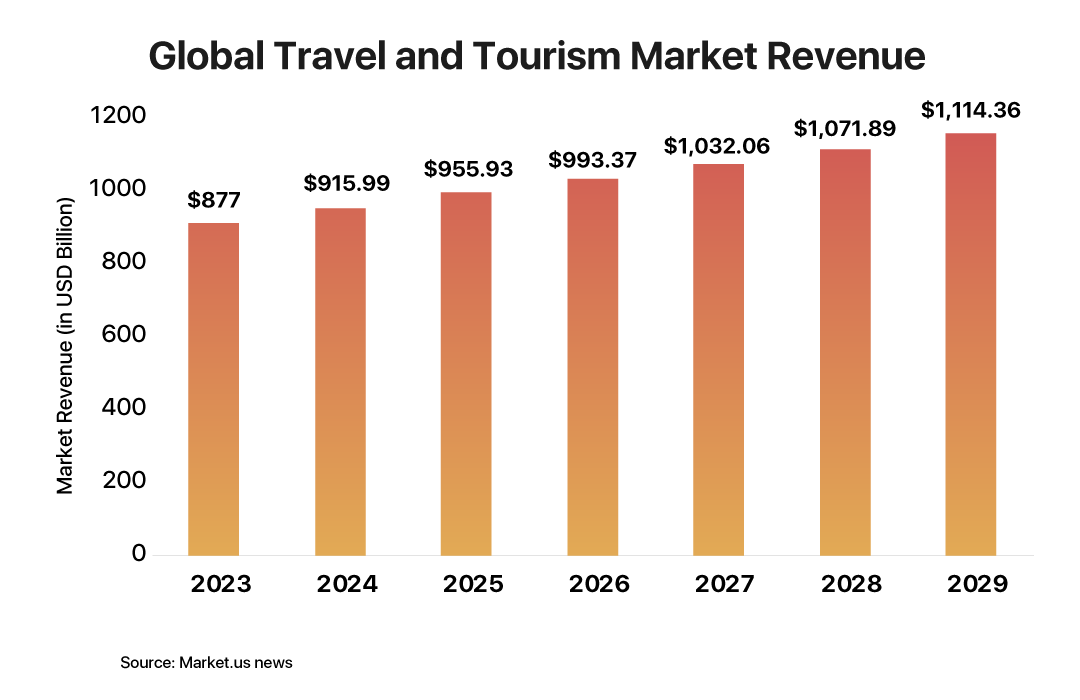
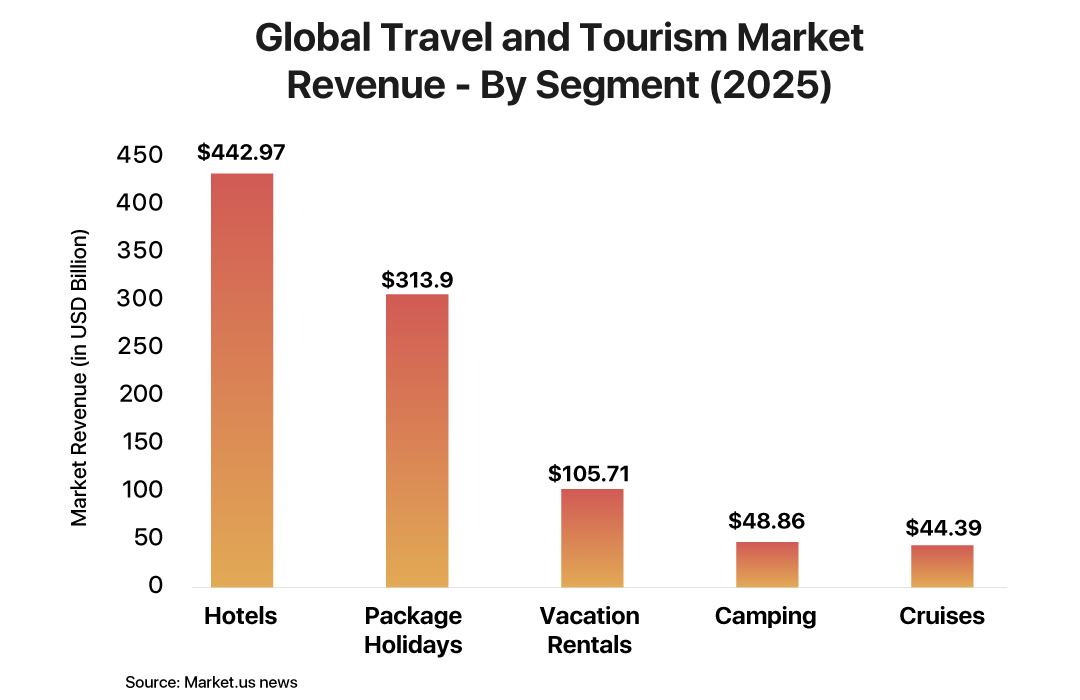
While the numbers show that travelers are spending, their path from inspiration to booking is fragmented, fluid, and highly competitive at every stage. Travelers today don’t just hit “book now”; they browse, compare, and click away in seconds if what they see isn’t relevant or helpful. In that maze, how do advertisers stay visible? The answer: a strong online multi-touch strategy.
Win the Travel Market with a Multi-Touch Strategy
In travel, visibility isn’t a one-and-done play, it’s a continuous presence across the traveler’s journey. According to the research by email tool tester, on average, it takes anywhere around 8 touchpoints to drive a sale—but in today’s fragmented digital landscape, that’s just the baseline. For high-value, complex purchases, the journey can stretch beyond 20 interactions before conversion.
In travel, visibility isn’t a one-and-done play, it’s a continuous presence across the traveler’s journey. According to the research by email tool tester, on average, it takes anywhere around 8 touchpoints to drive a sale—but in today’s fragmented digital landscape, that’s just the baseline. For high-value, complex purchases, the journey can stretch beyond 20 interactions before conversion.
The cue: To capture travelers’ attention, advertisers must be visible—and strategically present—across the full spectrum of discovery touchpoints. Relying on a single platform and hoping users will find you there is a risk brands can’t afford, especially as user behavior continues to evolve. As per Skift research, travelers lean on search engines (46%), review sites (36%), recommendations from family and friends (35%), hotel websites (31%), and OTAs (28%) when planning their trips.
So, how are some of the leading travel brands capturing high-intent users? – Let’s spill the tea.
Take RVshare, for example – they needed to capture high-intent users during peak travel windows—like Memorial Day, International Labor Day, and the summer vacation season—while improving conversions.
- By utilizing Site Discover, a performance solution that places advertisements in a non-intrusive manner targeting high-intent users through deals, reviews, coupons, and email clients. RVshare saw a 449% increase in clicks, a 137% rise in conversions, and a 108% boost in GMV sales compared to the previous year.
In the US, the busiest travel periods typically cluster around summer (June–August), the winter holidays (mid-December–January), and spring break (March–April)—windows when travelers make plans and brands face fierce competition for attention.
- One brand that seized these moments was Skyscanner. They aimed to capture high-intent travelers during peak seasons by driving higher traffic to their website via redirects. By leveraging one of SitePlug’s bottom-funnel performance solutions, the brand achieved a 2.3X uplift in redirects and a 2.5X increase in overall clicks in 2023 compared to the previous year.
Most users don’t scroll endlessly—59% of users never go beyond the first page of search results. Which directly means that attention concentrates at the very top, and brands that are not visible are at the risk of being overlooked.
- Expedia Group brands faced exactly this challenge, rising media acquisition costs and stagnant returns. They leveraged Site Suggest’s Knowledge Graph Card, that secured prominent right-hand SERP placement—without disrupting SEO or SEM while reducing acquisition costs, accelerating performance, and improving overall margins.
Additionally, one of the major concerns that may be overlooked in the advertising landscape is domain typos. Users often mistype brand URLs while searching for a brand, turning high-intent, direct navigation into lost visits. Those mis-typed domains can send users to error pages, parked pages loaded with ads, search intermediaries, or even competitors.
- This was a challenge Expedia Group brands faced, losing high-intent traffic to competitors due to user domain typos. By deploying Site Direct, Expedia Group brands were able to recover the lost traffic by identifying the user domain typos and redirecting them to the intended brand’s website, resulting in a 40% increase in clicks, a 94% jump in conversions, and 49% GMV growth within a year.
We believe that more conversions start with greater visibility — and that’s possible when travel brands expand their horizons with Affiliate Intelligence.
As Henrique de Castro Almeida, Global Head of Affiliate Marketing at Trip.com, aptly shared in a SitePlug testimonial, “a strong partnership with the right affiliate network can unlock mutually beneficial opportunities and accelerate growth in both brand reach and revenue”.
In a world where discovery happens across diverse digital touchpoints, now is the time for travel brands to harness affiliate innovation and turn visibility into measurable performance.


